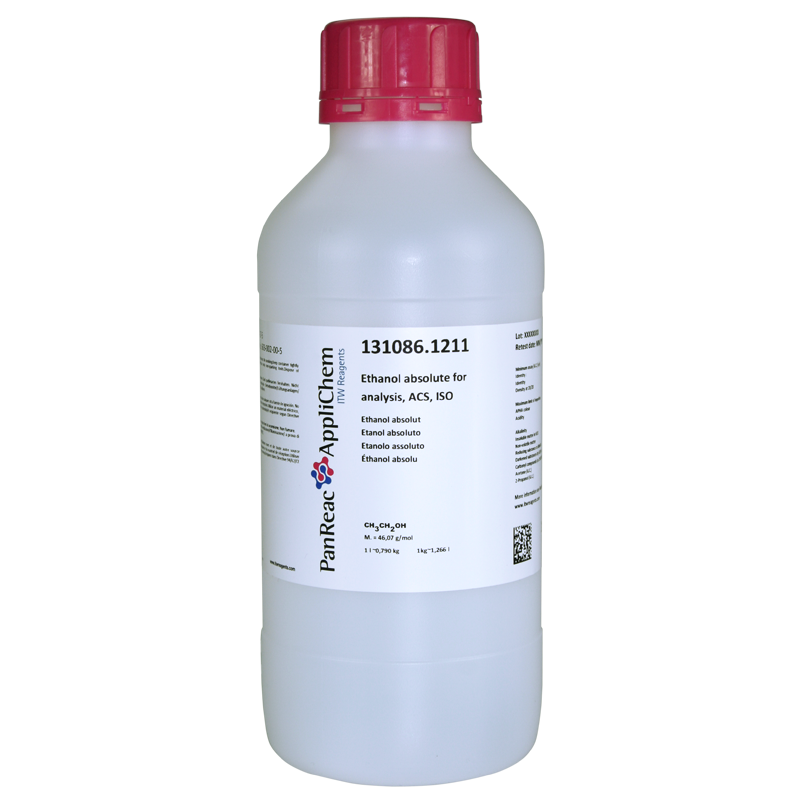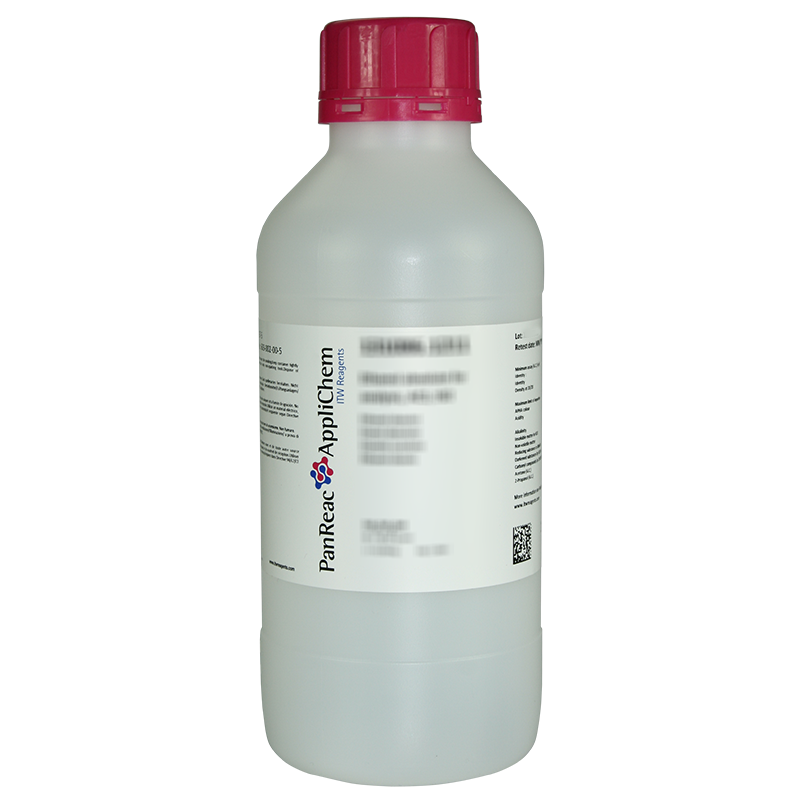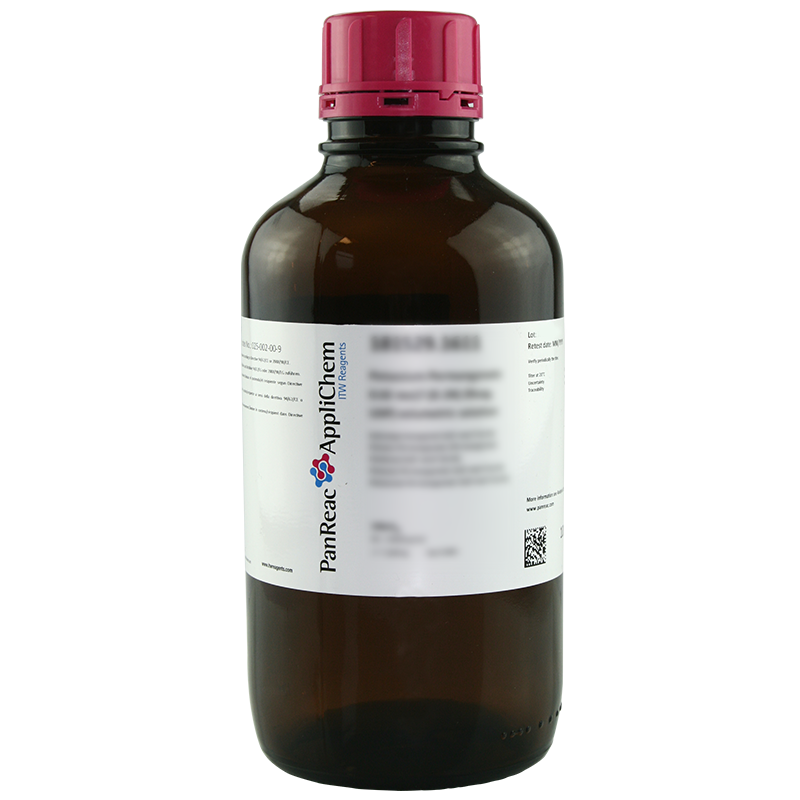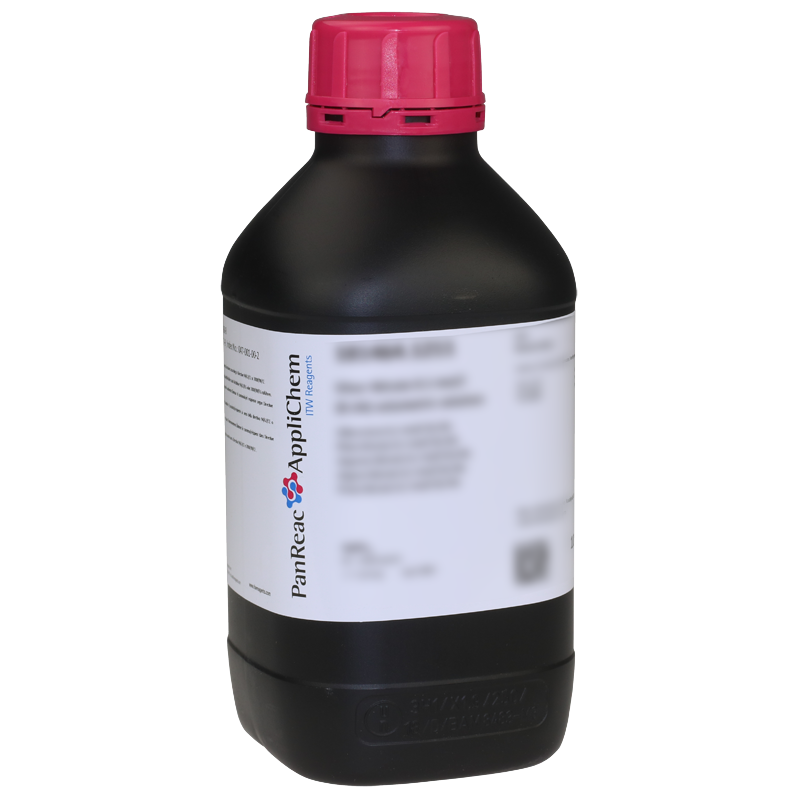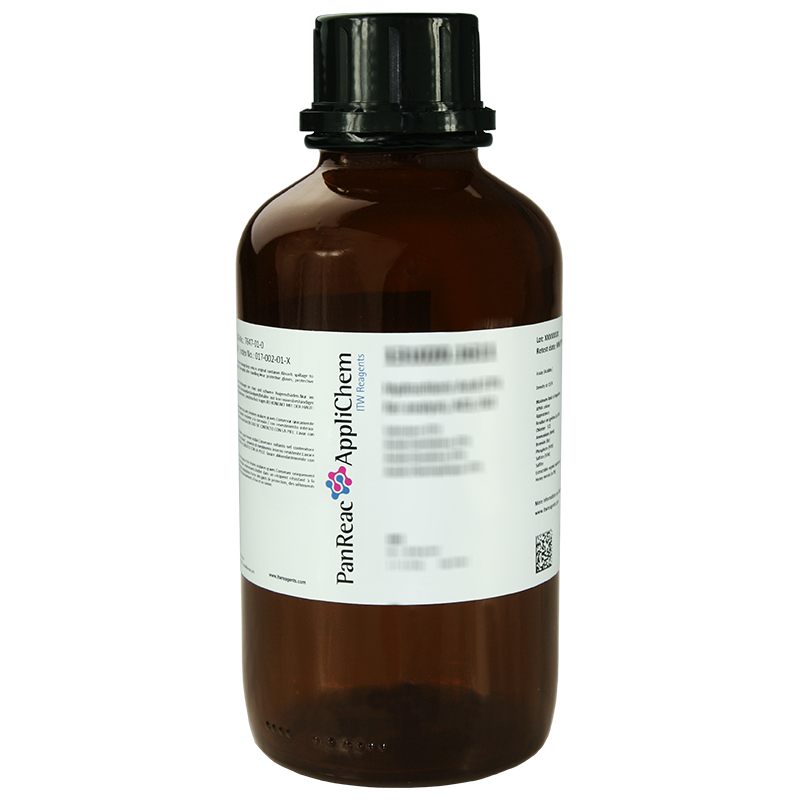Featured products
559 products available
- Dimethyl Sulfoxide (Reag. USP, Ph. Eur.) for analysis, ACS131954.1611 · 67-68-5
- Dimethyl Sulfoxide (USP, BP, Ph. Eur.) pharma grade191954.0716 · 67-68-5
- Dimethyl Sulfoxide (USP, BP, Ph. Eur.) pharma grade191954.07177 · 67-68-5
- Dimethyl Sulfoxide (USP, BP, Ph. Eur.) pharma grade191954.1214 · 67-68-5
- Dimethyl Sulfoxide (USP, BP, Ph. Eur.) pharma grade191954.1611 · 67-68-5
- Dimethyl Sulfoxide (USP, BP, Ph. Eur.) pharma grade191954.1612 · 67-68-5
- Dimethyl Sulfoxide for cell culture A3672,0100 · 67-68-5
- Dimethyl Sulfoxide for cell culture A3672,0050 · 67-68-5
- Dimethyl Sulfoxide for cell culture A3672,0250 · 67-68-5
- Dimethyl Sulfoxide for Headspace GC751954.1611 · 67-68-5
- Dimethyl Sulfoxide for Headspace GC751954.1612 · 67-68-5
- Dimethyl Sulfoxide for UV, IR, HPLC, GPC361954.1611 · 67-68-5
- Dimethyl Sulfoxide for UV, IR, HPLC, GPC361954.1612 · 67-68-5
- Dimethyl Sulfoxide, 99.5% for synthesis161954.1611 · 67-68-5
- Dimethyl Sulfoxide, 99.5% for synthesis161954.1612 · 67-68-5
Solvents
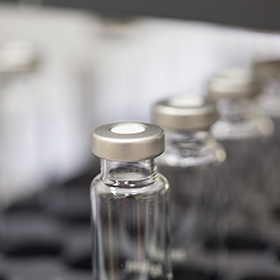
Chemistry
Although the solvent does not itself participate in the chemical reaction, it is very important for chemical reactions. The effects of the solvent vary and depend on the reaction. By dissolving reactants in a solvent, reactions become thermally controllable. Concentration data of substances dissolved in a solvent are valid only for a certain temperature because of temperature dependence.
The most important tasks of the solvent in chemical reactions are:
- Convective heat and mass transfer
- Stabilization of transition states of the reaction
- Dilution to avoid side reactions
Solvents also play an important role in the purification and processing of reaction mixtures (downstream process). Here are some examples of important processes:
- Precipitation
- Crystallization
- Recrystallization
- Extraction
- Chromatography
Dissolution properties
Quantitative prediction of dissolution properties is difficult and often defies intuition. General rules can be established, but these can only be used as a rough guide.
Polar substances generally dissolve well in polar solvents (e.g. salts in water). Non-polar substances generally dissolve well in non-polar solvents (e.g., non-polar organic substances in benzene or ether).
Solvents are usually divided into classes according to their physical properties. Such classification criteria include:
- Boiling point
- Permittivity
- Flash point
- Volatility
- Viscosity
- Polarity
- CH acidity
Aprotic solvent
If a molecule does not have a functional group from which hydrogen atoms in the molecule can be split off as protons (dissociation), it is called an aprotic solvent. These are opposite to protic solvents.
Aprotic-unpolar
Alkanes are nonpolar because of the small difference in electronegativity between carbon and hydrogen. This makes all substances in these groups readily soluble in each other; they are very lipophilic (actually even more lipophilic than the very weakly polar, namesake fats) and very hydrophobic (water-repellent). However, not only water cannot dissolve them, but also all other strongly polar substances, such as short-chain alcohols, hydrogen chloride or salts. In the liquid, the particles are held together only by van der Waals forces. For this reason, the boiling temperatures for this group of substances are much lower than for permanent dipoles, compared to the size and mass of the molecule. Since the elimination of protons to form carbanions is only possible with extremely strong bases, they are aprotic. Also included in the group of aprotic-nonpolar solvents are compounds such as carboxylic acid esters or ethers, which contain polar bonds but are unable to dissolve ionic compounds due to their low permittivity.
Representatives of this group are:
- Alkanes (kerosenes)
- Alkenes (olefins), alkynes
- Benzene and other aromatics with aliphatic and aromatic substituents
- Carboxylic acid esters
- Ethers, e.g. diethyl ether
- Completely symmetrical molecules such as tetramethylsilane or carbon tetrachloride
- Carbon disulfide, at high pressure also carbon dioxide
- Halogenated hydrocarbons that are either completely nonpolar (like carbon tetrachloride) or only slightly polar (methylene chloride) despite the high electronegativity of the halogen in question, e.g. chlorine.
- A special subgroup of halogenated hydrocarbons is formed by the perfluorinated hydrocarbons (e.g. hexafluorobenzene), which are not only nonpolar themselves, but also very poorly polarizable from the outside and therefore also tend to be poorly compatible with the other nonpolar solvents.
Aprotic-polar
However, if the molecule is substituted with strongly polar functional groups such as the carbonyl group, the nitro group or the nitrile group, the molecule exhibits a dipole moment, thus intermolecular electrostatic attraction of permanent dipoles is now added to the still existing (but much weaker) van der Waals forces. This results in a substantial increase in boiling point and, in many cases, a deterioration in miscibility with nonpolar solvents and an improvement in solubility of and in polar substances. Typical aprotic polar solvents have a permittivity above 15 and are capable of solvating cations. Since the anions are hardly solvated (bare anions), they exhibit high SN2 reactivity. Such solvents are excellent for performing nucleophilic substitutions under mild conditions. These include:
- Ketones, e.g. acetone.
- Lactones such as γ-butyrolactone
- Lactams such as N-methyl-2-pyrrolidone
- Nitriles such as acetonitrile
- Nitro compounds such as nitromethane
- Tertiary carboxylic acid amides such as dimethylformamide
- Urea derivatives such as tetramethylurea or dimethylpropyleneurea (DMPU)
- Sulfoxides such as dimethyl sulfoxide (DMSO)
- Sulfones such as sulfolane
- Carbonic acid esters such as dimethyl carbonate or ethylene carbonate
Protic solvents
As soon as a molecule has a functional group from which hydrogen atoms in the molecule can be split off as protons (dissociation), it is called a protic solvent. These are opposed to the aprotic solvents.
The most important protic solvent is water, which (simplified) dissociates into a proton and a hydroxide ion.
Other protic solvents are, for example, alcohols and carboxylic acids. Here, the splitting off of the proton always occurs at the OH group, since the electronegative oxygen can readily absorb the resulting negative charge.
The extent to which the respective solvent dissociates is determined by the acidity (according to the acid-base concept of Brønsted and Lowry). It should be noted that hydrogen atoms bonded to carbon can also be split off as protons (CH acidity), but the acidity of these compounds is usually too low to allow appreciable dissociation in neutral medium. The release of these protons is only possible by very strong bases.
Polar protic solvents dissolve salts and polar compounds, whereas the solubility of nonpolar compounds is low.
Protic solvents are:
- Water, the most important solvent of all, especially in animate nature.
- Methanol, ethanol and other short-chain alcohols (the larger the C-scaffold, the less pronounced the polar character; cholesterol, for example, is an alcohol, but still highly lipophilic)
- Primary and secondary amines
- Carboxylic acids (formic acid, acetic acid)
- Primary and secondary amides such as formamide
- Mineral acids (sulfuric acid, hydrogen halides or hydrohalic acids)
Polarity scales
Reichardt dye
A well-known scale for the polarity of a solvent is the ET(30) or ETN scale. It is derived from empirical spectroscopic measurements. The ET(30) value is defined as the transition energy of the longest wavelength Vis/NIR absorption band in a solution containing the negative solvatochromic Reichardt dye (betaine 30) at normal conditions, in kcal-mol-1. The ETN value is the ET(30) value normalized to the polarity extrema of tetramethylsilane (=0) and water (=1).
Table with solvents and their data
| Solvent | Melting point [°C] |
Boiling point [°C] |
Flash point [°C] |
Density [g/cm3] at 20 °C |
Permittivity at 25 °C |
Dipole moment [· 10−30 Cm] |
Refractive index nD20 |
E τ ( 30 ) [kJ/mol] |
Compressibility [10−6 /bar] |
| Acetic Anhydride | −73.1 | 139.5 | 49 | 10820 | 20.7 (19 °C) | 9.41 | 1.3900 | 183.5 | - |
| Acetone | −95.4 | 56.2 | −19 | 0.7889 | 20.70 | 9.54 | 1.3588 | 176.4 | 126 |
| Acetonitrile | −45.7 | 81.6 | 13 | 0.7857 | 37.5 (20 °C) | 11.48 | 1.3442 | 192.3 | 115 |
| Aniline | −6.3 | 184 | 76 | 10217 | 6.89 (20 °C) | 5.04 | 1.5863 | 185.2 | - |
| Anisole | −37.5 | 155.4 | 41 | 0.9961 | 4.33 | 4.17 | 1.5179 | 155.5 | - |
| Benzene | 5.5 | 80.1 | −8 | 0.87565 | 2.28 | 0.0 | 1.5011 | 142.2 | 95 |
| Benzonitrile | −13 | 190.7 | 70 | 1.0102 (15 °C) | 25.20 | 13.51 | 1.5289 | 175.6 | - |
| Brombenzene | −30.8 | 156 | 51 | 14950 | 5.40 | 5.17 | 1.5597 | 156.8 | - |
| 1-Butanol | −89.8 | 117.3 | 34 | 0.8098 | 17.51 | 5.84 | 1.3993 | 209.8 | - |
| tert-Butyl methyl ether (MTBE) | −108.6 | 55.3 | −28 | 0.74 | - | - | 1.3690 | 145.2 | - |
| γ-Butyrolactone | −44 | 204–206 | 101 | 1.13 | 39.1 | 4.12 | 1.4360 | – | - |
| Carbon Disulfide | −110.8 | 46.3 | −30 | 12632 | 2.64 (20 °C) | 0.0 | 1.6319 | 136.3 | - |
| Carbon Tetrachloride | −23 | 76.5 | – | 15940 | 2.24 (20 °C) | 0.0 | 1.4601 | 135.9 | 110 |
| Chlorbenzene | −45.6 | 132 | 28 | 11058 | 5.62 | 5.14 | 1.5241 | 156.8 | - |
| Chloroform | −63.5 | 61.7 | – | 14832 | 4.81 (20 °C) | 3.84 | 1.4459 | 163.4 | 100 |
| Cyclohexane | 6.5 | 80.7 | 4.5 | 0.7785 | 2.02 (20 °C) | 0.0 | 1.4266 | 130.4 | 118 |
| Dibutyl Ether | −98 | 142.5 | 25 | 0.764 | 4.34 (20 °C) | 3.9 | 1.3990 | 187.6 | - |
| 1,2-Dichloroethane (Ethylendichloride) | −35.3 | 83.5 | 13 | 12351 | 10.36 | 6.2 | 1.4448 | 175.1 | - |
| Diethylen Glycol | −6.5 | 244.3 | 124 | 1.1197 (15 °C) | 7.71 | 7.71 | 1.4475 | 224.9 | - |
| Diethyl Ether | −116.2 | 34.5 | −40 | 0.7138 | 4.34 (20 °C) | 4.34 | 1.3526 | 144.6 | - |
| Dimethylacetamide | −20 | 165 | 66 | 0.9366 (25 °C) | 37.78 | 12.41 | 1.4380 | 182.7 | - |
| Dimethylformamide | −60.5 | 153 | 67 | 0.9487 | 37.0 | 12.88 | 1.4305 | 183.1 | - |
| Dimethyl Sulfoxide | 18.4 | 189 | 88 | 11014 | 46.68 | 13.00 | 1.4770 | 188.1 | - |
| 1,4-Dioxane | 11.8 | 101 | 12 | 10337 | 2.21 | 1.5 | 1.4224 | 150.0 | - |
| Ethanol | −114.5 | 78.3 | 18 | 0.7893 | 24.55 | 5.77 | 1.3614 | 216.9 | 114 |
| Ethyl Acetate | −83.6 | 77.06 | −2 | 0.9003 | 6.02 | 6.27 | 1.3723 | 159.3 | 104 |
| Ethylen Glycol | −13 | 197 | 117 | 11088 | 37.7 | 7.61 | 1.4313 | 235.3 | - |
| Ethylen Glycol Dimethyl Ether | −58 | 84 | −6 | 0.8628 | 7.20 | 5.70 | 1.3796 | 159.7 | - |
| Formamide | 2.5 | 210.5 | 175 | 11334 | 111.0 (20 °C) | 11.24 | 1.4472 | 236.6 | - |
| Glacial Acetic Acid | 16.6 | 117.9 | 42 | 10492 | 6.15 (20 °C) | 5.60 | 1.3716 | 214.0 | - |
| n-Heptane | −91 | 98 | −4 | 0.684 | 1.97 | 0.0 | 1.3870 | 130.1 | 120 |
| n-Hexane | −95 | 68 | −20 | 0.6603 | 1.88 | 0.0 | 1.3748 | 129.2 | 150 |
| Methanol | −97.8 | 64.7 | 6.5 | 0.7914 | 32.70 | 5.67 | 1.3287 | 232.0 | 120 |
| 3-Methyl-1-Butanol (Isoamyl Alcohol) | −117.2 | 130.5 | 42 | 0.8092 | 14.7 | 6.07 | 1.4053 | 196.5 | - |
| Methyl Ethyl Keton (Butanone) | −86.3 | 79.6 | −4 | 0.8054 | 18.51 (20 °C) | 9.21 | 1.3788 | 172.6 | - |
| 2-Methyl-2-Propanol (tert-Butanol) | 25.5 | 82.5 | 9 | 0.7887 | 12.47 | 5.54 | 1.3878 | 183.1 | - |
| Methylene Chloride (Dichloromethane, DCM) | −95.1 | 40 | – | 13266 | 8.93 | 5.17 | 1.4242 | 171.8 | - |
| N-Methyl-2-Pyrrolidone (NMP) | −24 | 202 | 245 | 1.03 | 32.2 | 4.09 | 1.4684 | – | - |
| N-Methylformamide | −3.8 | 183 | 111 | 1.011 (19 °C) | 182.4 | 12.88 | 1.4319 | 226.1 | - |
| Nitrobenzene | 5.76 | 210.8 | 81 | 12037 | 34.82 | 13.44 | 1.5562 | 175.6 | - |
| Nitromethane | −28.5 | 100.8 | 35 | 11371 | 35.87 (30 °C) | 11.88 | 1.3817 | 193.5 | - |
| n-Pentane | −130 | 36 | −49 | 0.6262 | – | – | 1.3580 | 129.7 | - |
| Petrol Ether | – | 25–80 | -26 | 0.63–0.83 | – | – | – | – | – |
| Piperidine | −9 | 106 | 4 | 0.8606 | 5.8 (20 °C) | 3.97 | 1.4530 | 148.4 | - |
| Propanol | −126.1 | 97.2 | 24 | 0.8035 | 20.33 | 5.54 | 1.3850 | 211.9 | 100 |
| 2-Propanol (Isopropyl Alcohol) | −89.5 | 82.3 | 16 | 0.7855 | 19.92 | 5.54 | 1.3776 | 203.1 | 100 |
| Propylene Carbonate (4-Methyl-1,3-Dioxol-2-one) | −48.8 | 241.7 | 130 | 12069 | 65.1 | 16.7 | 1.4209 | 195.6 | - |
| Pyridine | −42 | 115.5 | 23 | 0.9819 | 12.4 (21 °C) | 7.91 | 1.5095 | 168.0 | - |
| Quinoline | −15.6 | 238 | 101 | 10929 | 9.00 | 7.27 | 1.6268 | 164.7 | - |
| Sulfolane | 27 | 285 | 177 | 1.261 (25 °C) | 43.3 (30 °C) | 16.05 | 1.4840 | 183.9 | - |
| Tetrachloro Ethene | −19 | 121 | – | 16227 | 2.30 | 0.0 | 1.5053 | 133.3 | - |
| Tetrahydrofuran (THF) | −108.5 | 66 | −22.5 | 0.8892 | 7.58 | 5.84 | 1.4070 | 156.3 | - |
| Toluene | −95 | 110.6 | 7 | 0.8669 | 2.38 | 1.43 | 1.4961 | 141.7 | 87 |
| 1,1,1-Trichloro ethane | −30.4 | 74.1 | – | 13390 | 7.53 (20 °C) | 5.24 | 1.4379 | 151.3 | - |
| Trichlorethene | −73 | 87 | – | 14642 | 3.42 (16 °C) | 2.7 | 1.4773 | 150.1 | - |
| Triethylamine | −114.7 | 89.3 | −7 | 0.7275 | 2.42 | 2.90 | 1.4010 | 139.2 | - |
| Triethylene Glycol | −5 | 278.3 | 166 | 1.1274 (15 °C) | 23.69 (20 °C) | 9.97 | 1.4531 | 223.6 | - |
| Triethylene Glycol Dimethyl Ether (Triglyme) | – | 222 | 113 | 0.98 | 7.5 | – | 1.4233 | 161.3 | - |
| Water | 0.0 | 100 | – | 0.9982 | 78.39 | 6.07 | 1.3330 | 263.8 | 46 |
Table of alcoholic solvents and their evaporation rates relative to acetic acid n-butyl ester (= 1)
| Solvent | Boiling point [°C] | Evaporation rate |
| tert-Amyl Alcohol | 102 | 0.93 |
| Benzyl Alcohol | 205 | 0.007 |
| 1-Butanol | 118 | 0.44 |
| 2-Butanol | 100 | 0.81 |
| tert-Butanol | 83 | 0.95 |
| Cyclohexanol | 161 | 0.05 |
| 1-Decanol | 231 | 0.001 |
| Diacetone Alcohol | 166 | 0.14 |
| Ethanol | 78 | 1.6 |
| 2-Ethyl-1-Butanol | 146 | 0.11 |
| 2-Ethylhexanol | 185 | 0.02 |
| Hexanol | 148 | 0.096 |
| Methanol | 65 | 2.1 |
| 1-Octanol | 196 | 0.007 |
| 2-Octanol | 177 | 0.018 |
| 4-Methyl-2-pentanol (MIBC) | 132 | 0.3 |
| 1-Pentanol (Amyl Alcohol) | 137 | 0.2 |
| 1-Propanol | 97 | 0.86 |
| 2-Propanol | 82 | 1.4 |
| 2-methyl-1-Propanol | 108 | 0.62 |
| Tetrahydrofurfuryl Alcohol | 178 | 0.03 |
